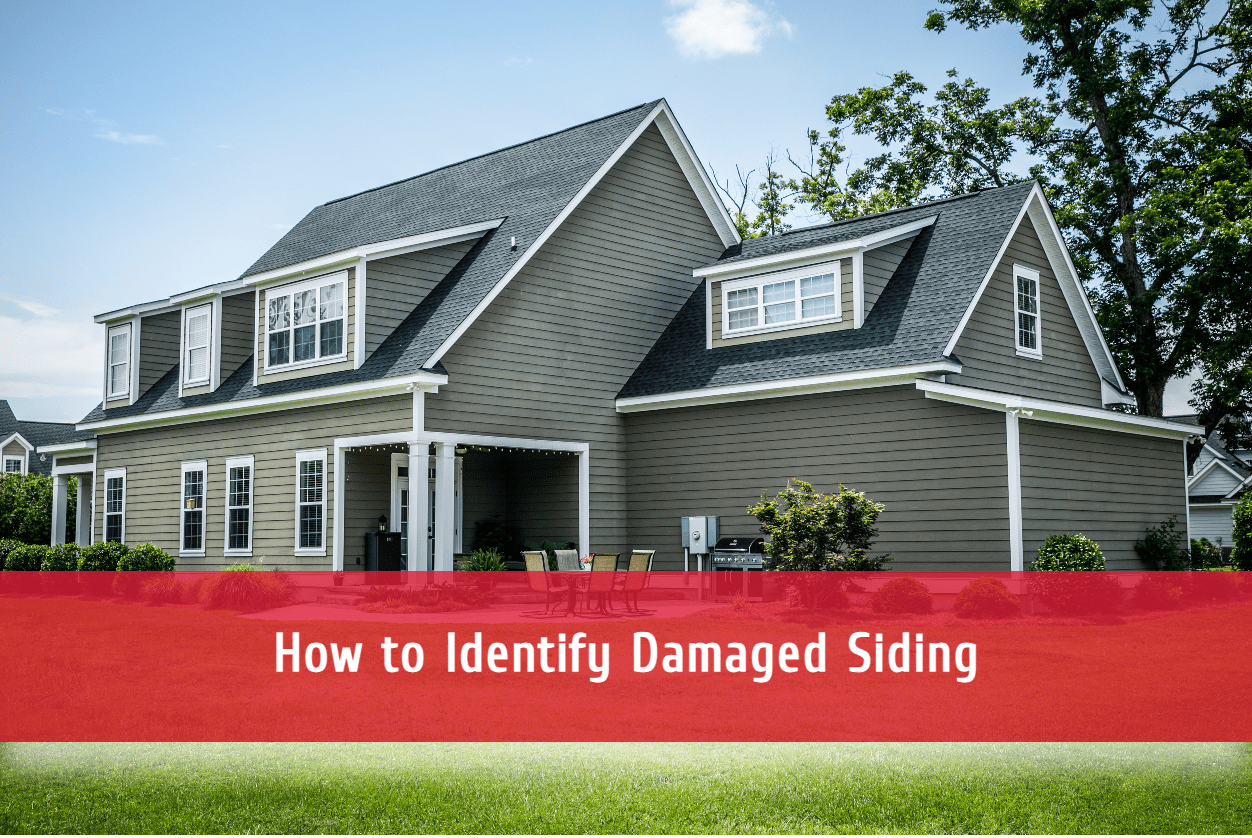Siding is an important part of your home’s exterior, as it protects your home from the elements. However, siding can also be damaged by a variety of factors, such as weather, pests, and wear and tear. If you suspect that your siding is damaged, it’s important to identify the problem so that you can take steps to repair it.
In this guide, we will discuss the signs of damaged siding, when to replace it, and what you can expect to pay for a siding inspection.
Signs of Damaged Siding
There are a few different ways to identify damaged siding. Here are some of the most common signs:
- Cracks or holes
- Blisters or peeling paint
- Sagging or bowing area
- Rust or water damage
- Moisture or mold growth
- Misaligned panels
If you notice any of these signs, it is important to have the siding inspected by a professional to determine if it needs to be repaired or replaced.
How to Inspect Siding for Damage
It’s important to regularly inspect your siding for damage to catch minor issues before they turn into larger problems. To inspect your siding for damage, you will need to:
- Get a ladder or step stool so you can reach the siding.
- Inspect the siding for cracks, holes, or other damage.
- Look for signs of water damage, such as peeling paint or warped panels.
- Check for loose or missing nails or screws.
- Inspect the flashing around windows and doors for damage.
If you find any damage to your siding, it is important to have it repaired or replaced as soon as possible to prevent further damage.
When to Replace Your Siding
There are a few signs that indicate when it is time to replace your siding rather than repair it. These include:
- Cracks: Any significant cracks indicate the siding is no longer protecting your home and it’s usually best to replace the damaged sections.
- Water Damage: If there is water seeping into your home, it’s clear that the siding is compromised. To address any underlying issues caused by water, a full replacement is necessary.
- Improper Installation: Siding that was incorrectly installed can lead to a variety of problems and should be replaced to prevent further damage.
- Damage From Pests or Animals: If pests, like mice or squirrels, have decided to call your siding home, a replacement is needed to ensure they are taken care of.
Replacing your siding can be a costly project, but it is important to remember that it is an investment in your property. New siding can improve the appearance of your home, increase its energy efficiency, and extend its lifespan. When choosing a new siding, it is important to select a material that is appropriate for your climate and budget. There are many different types of siding available, so you should be able to find one that meets your needs.
Replacing your siding is a major project, but it is one that can pay off in the long run. By choosing quality materials and having it installed properly, you can enjoy the benefits of new siding for many years to come.
How to Maintain Your Siding
Siding is an important part of your home’s exterior, and it helps to protect the structure from the elements. By following these tips, you can help to maintain your siding and keep it looking its best for years to come.
- Clean your siding regularly. This will help to remove dirt, debris, and mildew, which can lead to damage over time.
- Inspect your siding regularly for signs of damage. This includes cracks, holes, loose nails, and peeling paint.
- Repair any damage to your siding as soon as possible. This will help to prevent the issue from getting worse and costing you more money to fix.
- Paint your siding every few years. This will help to protect the siding from the sun’s UV rays and keep it looking its best.
- Schedule siding inspections with contractors to ensure there is no hidden damage. Professionals know the types of damage to look for based on the climate in your area.
By following these tips, you can help to maintain your siding and keep it looking its best for years to come.
How Much Does a Siding Inspection Cost?
A professional siding inspection is recommended at least once a year, as experts are trained to find and fix even the smallest signs of damage. The cost of a siding inspection will vary depending on a few different factors, including:
- The Size of Your Home: The larger your home, the more time it will take to inspect the siding, and the higher the cost will be.
- The Type of Siding You Have: Different types of siding require different inspection methods, and some types of siding are more difficult to inspect than others.
- The Location of Your Home: The cost of a siding inspection can vary depending on the climate in your area. In areas with harsh weather conditions, siding is more likely to be damaged, and the inspection will take longer.
If you are concerned about the condition of your siding, it is a good idea to have it inspected by a qualified professional. A siding inspection can help you to identify any potential problems and take steps to prevent further damage.
Best Siding Contractor in New Jersey
Do you think you have damaged siding on your home? If so, it’s important to have it addressed in order to maintain the integrity of your home. Siding damage can be caused by a variety of things, such as sun exposure, moisture, or severe weather. If you see any of these signs of damaged siding, it’s important to have it repaired or replaced as soon as possible. Contact Champion Exteriors at (609) 845-3576 to schedule a free consultation.


